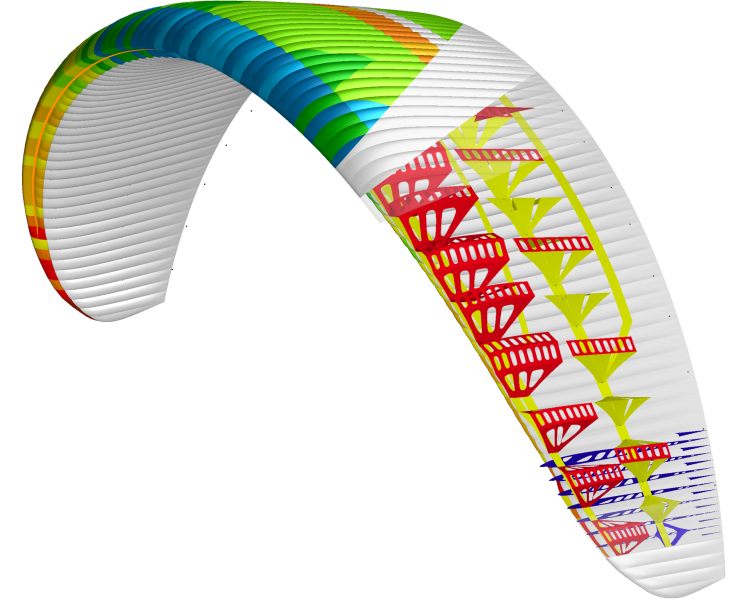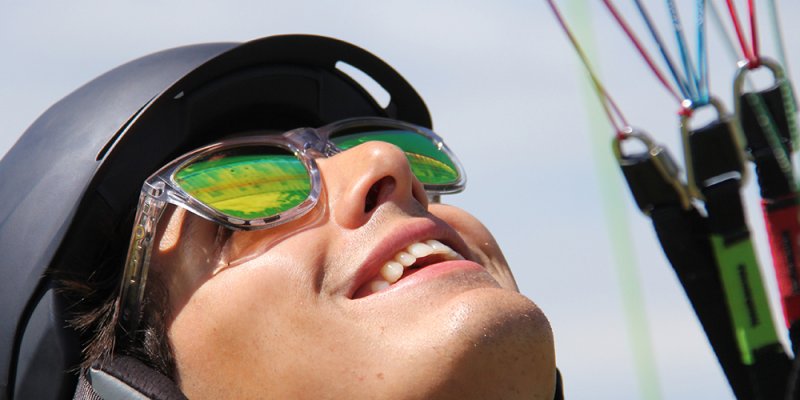
- Products
- Paragliders
- Diva



Diva
CCC
Striving for glory in the most prestigious cross-country competitions? The DIVA will take you to goal.
Size
m²
| XS | S | M | L |
| 21 | 23 | 25 | 26 |
Specs
| XS | S | M | L | |
|---|---|---|---|---|
| Linear scaling factor | 1 | 1.04 | 1.08 | 1.12 |
| Projected area (m²) | 17.4 | 18.9 | 20.3 | 21.9 |
| Flat area (m²) | 21 | 22.7 | 24.5 | 26.3 |
| Glider weight (kg) | 5 | 5.4 | 5.8 | 6.2 |
| Total line length (m) | 205 | 212 | 222 | 231 |
| Height (m) | 7.1 | 7.4 | 7.6 | 7.9 |
| Number of main lines (A/B/C) | 3/3 | |||
| Cells | 74 | |||
| Flat aspect ratio | 7.5 | |||
| Projected aspect ratio | 5.4 | |||
| Root chord (m) | 2 | 2.1 | 2.3 | 2.5 |
| Flat span (m) | 12.6 | 13 | 14.1 | 15.8 |
| Projected span (m) | 9.7 | 10.1 | 10.9 | 12.2 |
| Trim speed (km/h) | 40 | |||
| Top speed (km/h) | 75 | 75 | 74 | 74 |
| Min sink (m/s) | 1 | |||
| Best glide | 12 | |||
| Weight range (kg) | 70-90 | 80-100 | 90-112 | 100-125 |
| Certification (EN/LTF) | CCC | |||
Info
With 25 years of competition experience behind him, Bruce understands well the requirements of a good competition wing. The DIVA is the fastest and most advanced paraglider he has ever created. CCC certified, it is constructed from a mix of standard D30 and lightweight 27g Porcher cloths. It benefits from a new minimal-drag line layout, CCB, shark nose, progressive stability and a speed-optimising profile. All that makes the DIVA very competitive yet easy to handle in the air and on the ground, with top safety for its class.

Tech

BGD Feedback

Leading edge mini-ribs

Maximised unsupported cells

Integrated Line Layout

Post C-band

Progressive Stability
Snap Locks

Strong shark nose

Triple finger diagonals

Weight-optimised ribs
Target
Designed by a world champ for the next champ, the DIVA is for pilots who want the feel of 3-liner while benefitting from the performance of a 2-liner. This is a very high performance wing and is only for highly skilled competition-level pilots.
Designer's notes
Since my son Tyr will be flying in the Worlds, I designed the DIVA to be fast, but with the perfect balance of raw performance and progressive safety. The DIVA is designed to warn experienced pilots of light-to-moderate turbulence rather than completely collapsing.
Bruce’s article in Cross Country magazine, ‘Shifting Our Thinking on Safety’, explains how a wing that is very stable and almost never collapses can lead to more accidents because the pilot has little experience of how to deal with it. Any wing will collapse given enough turbulence. So if a wing is going to collapse, a small collapse in medium turbulence is better than a big collapse in strong turbulence. The nature of the collapse, as well as the amount of turbulence the wing can resist before the collapse, is what make the collapse easier to cope with and the wing safer.
Material
| Top surface | Dominico D30 42g/m² |
|---|---|
| Bottom surface | Porcher Skytex Classic II 27g/m² |
| Internal structure | Porcher Skytex hard finish 40g/m² |
| Nose reinforcing | Plastic wire 2,3 / 2,7mm |
| Risers | 13mm Kevlar / Nylon webbing |
| Pulleys | Harken |
| Top lines | Edelrid Magix Pro Dry 8001U |
| Middle lines | Edelrid Magix Pro Dry 8001U |
| Lower lines | Edelrid Magix Pro Dry 8001U |
| Brakes | Liros DC |
Related Videos
Explore, Create, Share - BGD Nomads
22-09-2020
WE ARE A GROUP OF DIVERSE INDIVIDUALS UNITED BY A PASSION TO EXPLORE, CREATE AND SHARE. Follow our adventures as we attempt to share them through film and photography. More
Fassa Sky Expo 2021 - Day 2
28-09-2021
Another glorious day at the #fassaskyexpo2021 in Italy! Watch the team climb up the huge rock faces while testing out the Base 2 Lite! Thanks @kaybusemann for the superb film! More
Kossen - 2017
20-05-2017
Bruce Goldsmith Designs view of the 2017 Super Paragliding Testival in Kossen, Austria. The event was a huge success, with four flyable days and gliders colouring the sky from dawn until dusk every day. BGD’s team were there with the whole range... More
Weightless - BGD's Serial Competition
18-07-2018
Pilots from all over the world competed in this one of a kind competition. More















